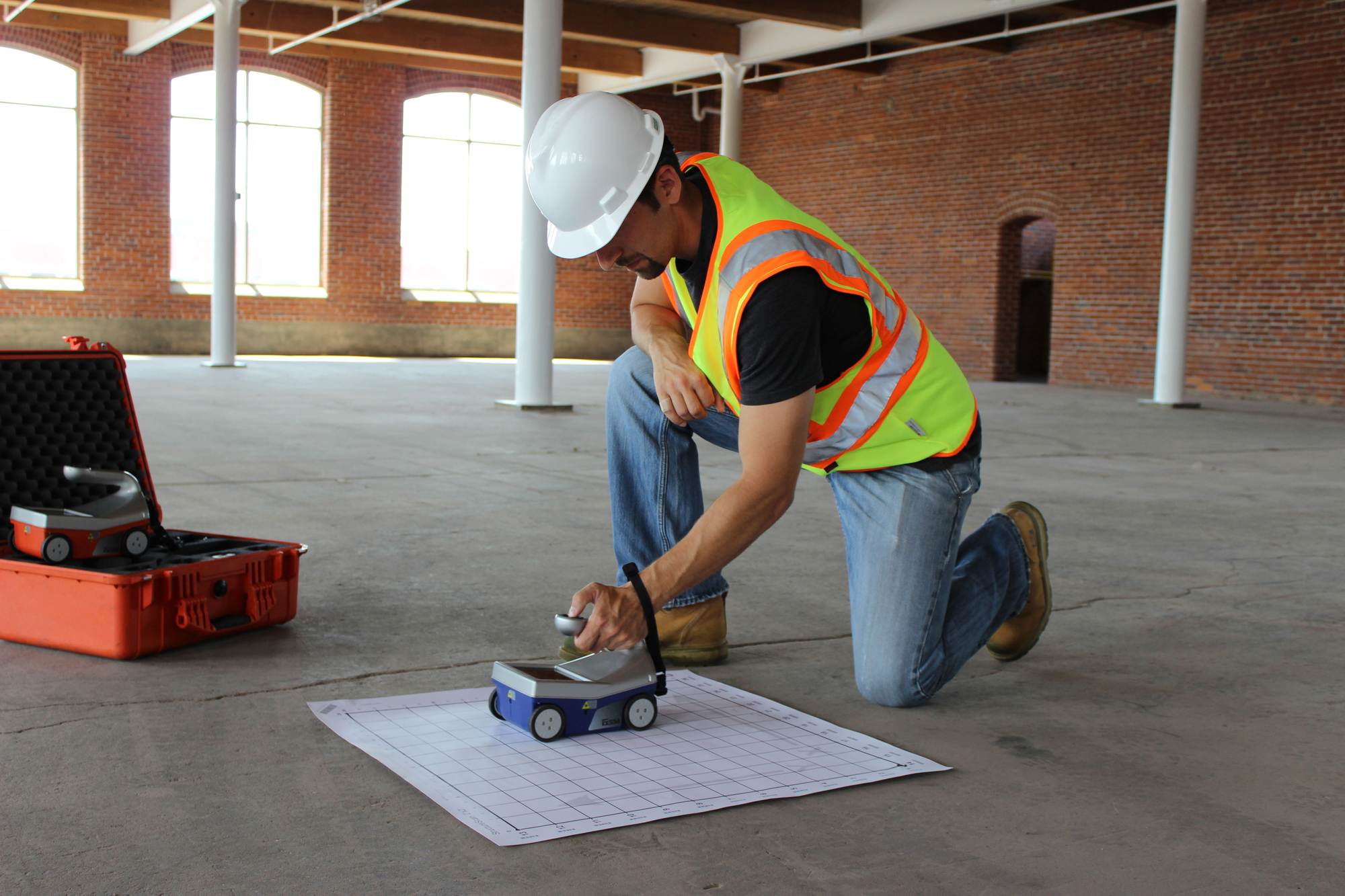RainierGPR Concrete Scanning: Ensuring Security and Effectiveness in Building
RainierGPR Concrete Scanning: Ensuring Security and Effectiveness in Building
Blog Article
Exploring the Key Benefits of Concrete Scanning in Construction Projects
In the world of modern building techniques, the application of concrete scanning technology has become an essential tool for ensuring job efficiency and structural integrity. From boosting security procedures to precisely identifying utilities concealed under the surface, the advantages of concrete scanning are diverse. The capability to improve project timelines and decrease costs while protecting existing frameworks is a testimony to the value this modern technology offers the building and construction industry. As we explore the nuanced benefits of concrete scanning, it ends up being noticeable that its influence extends much past surface-level evaluations, offering a glance right into the elaborate web of advantages waiting to be discovered.
Improved Safety Steps
Making use of advanced concrete scanning modern technology boosts security procedures on building websites by giving exact discovery of potential risks hidden underneath the surface. This modern technology allows construction teams to determine rebar, avenues, post-tension wires, and other obstructions before excavation or boring, dramatically decreasing the danger of mishaps. By identifying these elements exactly, employees can avoid destructive vital architectural parts, therefore protecting against injuries, delays, and pricey repairs.
Furthermore, concrete scanning plays a crucial role in making certain the honesty of existing structures throughout renovations or growths. By detecting weaknesses, gaps, or deterioration within concrete components, designers can attend to these issues proactively, improving the total security and long life of the building. This aggressive method not just mitigates the threat of structural failures however likewise lessens the capacity for crashes brought on by unpredicted structural shortages.
In essence, the execution of concrete scanning innovation serves as an aggressive precaution that safeguards both construction workers and the structural stability of buildings, eventually adding to the overall success and performance of construction tasks. - RainierGPR Concrete Scanning
Accurate Detection of Energies
Concrete scanning modern technology facilitates exact recognition of below ground utilities, boosting construction site safety and performance. Exact discovery of energies is essential in construction tasks to stop expensive problems, task delays, and most importantly, guarantee the security of workers and the public. By using innovative scanning innovations such as ground-penetrating radar (GPR) and electromagnetic induction, building teams can map out the place of buried pipelines, cables, and various other energies with high levels of accuracy.

Time and Expense Effectiveness

Concrete scanning technology allows construction teams to accurately situate rebar, post-tension cable televisions, and other embedded items within concrete frameworks. This specific information assists in avoiding pricey mistakes such as unintentional damage to essential components throughout exploration, cutting, or coring tasks. Furthermore, by determining possible threats in advance, the need for pricey repair work or revamp due to damages can be lessened, causing cost savings for the job.

Additionally, the ability to promptly and properly identify utilities under the surface area without causing any type of damages not just conserves time however likewise stops pricey disturbances to existing infrastructure. In general, the time and cost effectiveness advantages of concrete scanning make it an important device for improving building job monitoring and implementation.
Conservation of Structural Honesty
Maintaining the architectural integrity of structures and infrastructure is extremely important in guaranteeing long-lasting stability and safety. Concrete scanning plays a vital duty in this preservation process by enabling building specialists to recognize potential hazards to the structural honesty of a building or infrastructure prior to they my review here escalate right into significant issues. With the use of advanced scanning innovations such as ground-penetrating radar (GPR) and electromagnetic induction, building and construction groups can non-invasively analyze the problem of concrete structures, locate rebar, post-tension cable televisions, and various other embedded elements, and identify any kind of gaps, cracks, or damage within the concrete.
Improved Task Preparation
In order to make certain the effective implementation of construction tasks, precise interest to information and extensive planning are necessary components that stem from a thorough understanding of the architectural problems determined through concrete scanning. Ultimately, including concrete official website scanning into the task planning stage improves control among group members, promotes proactive analytic, and contributes to the effective delivery of building and construction jobs within budget plan and schedule restraints.
Verdict
To conclude, concrete scanning offers numerous advantages in construction tasks. By enhancing precaution, precisely spotting energies, improving time and expense effectiveness, maintaining architectural stability, and aiding in job planning, concrete scanning verifies to be a vital tool for effective job implementation. Its capacity to alleviate risks, increase effectiveness, and guarantee task integrity makes it a vital property for building and construction professionals.
In the realm of modern construction practices, the utilization of concrete scanning innovation has arised as a pivotal tool for making sure job efficiency and structural stability.Concrete scanning modern technology allows building and construction groups to precisely locate rebar, post-tension cable televisions, and other ingrained objects within concrete frameworks. Through the usage of innovative scanning modern technologies such as ground-penetrating radar (GPR) and electro-magnetic induction, construction groups can non-invasively examine the condition of concrete structures, find rebar, post-tension cords, and other ingrained components, and recognize any voids, splits, or wear and tear within the concrete.
In order to ensure the effective execution of construction jobs, careful attention to information and comprehensive preparation are vital components that stem from an extensive understanding of the structural problems determined with concrete scanning. Ultimately, incorporating concrete scanning into the task preparation phase boosts sychronisation among team participants, promotes positive problem-solving, and contributes to the effective distribution of building and construction projects within budget and routine restraints.
Report this page